The animal kingdom provides so much diversity that it’s almost impossible to keep track of all the different species in the world. Sometimes the distinction between close relatives is too hard to even notice. But different species often evolve in similar ways because of their environment.
We at Bright Side gathered 16 pairs of animals who are almost indistinguishable from each other at first sight in order to show you the differences between them.
1. Jaguar vs leopard
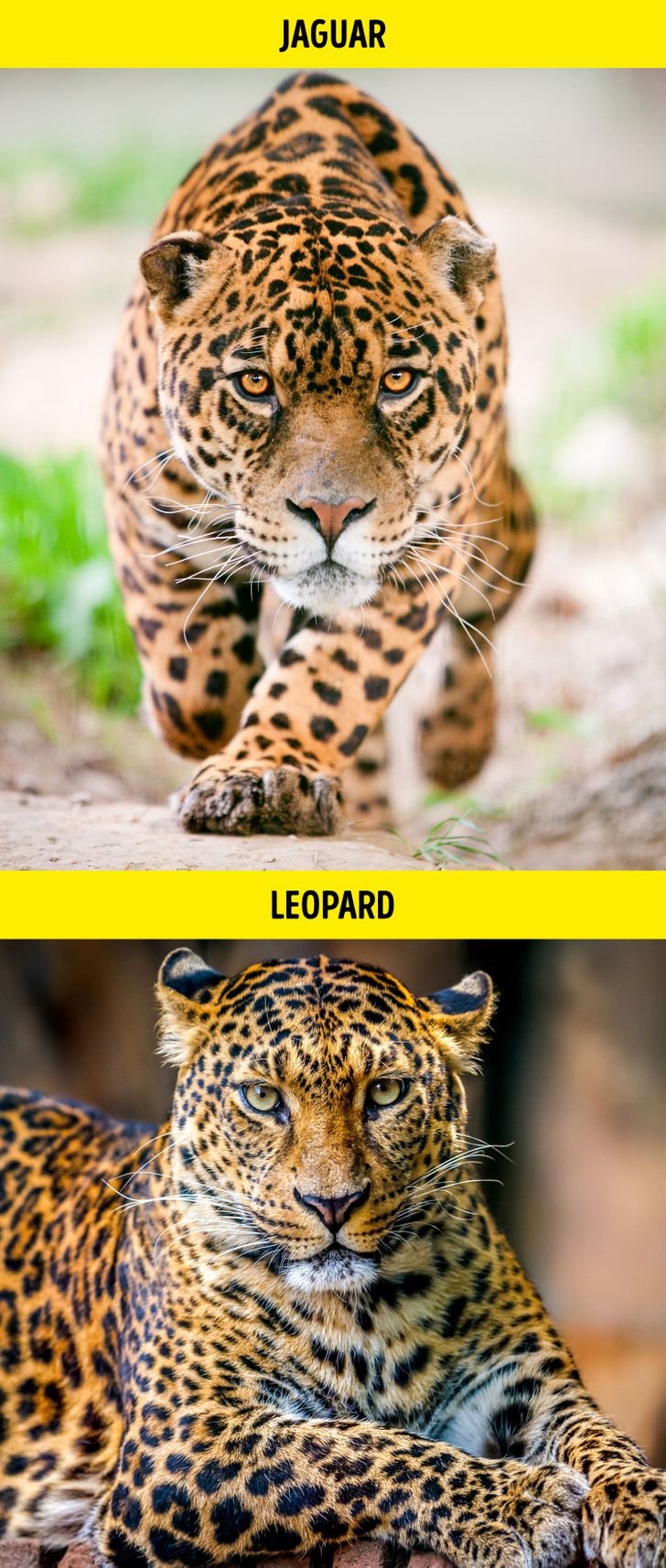
Despite their similarities, these big cats inhabit different continents and climate zones: leopards live in African savannas, while jaguars dwell in South American tropical forests. Jaguars are also larger and bulkier, and unlike leopards and many other cats, they’re fond of water.
2. Alligator vs crocodile
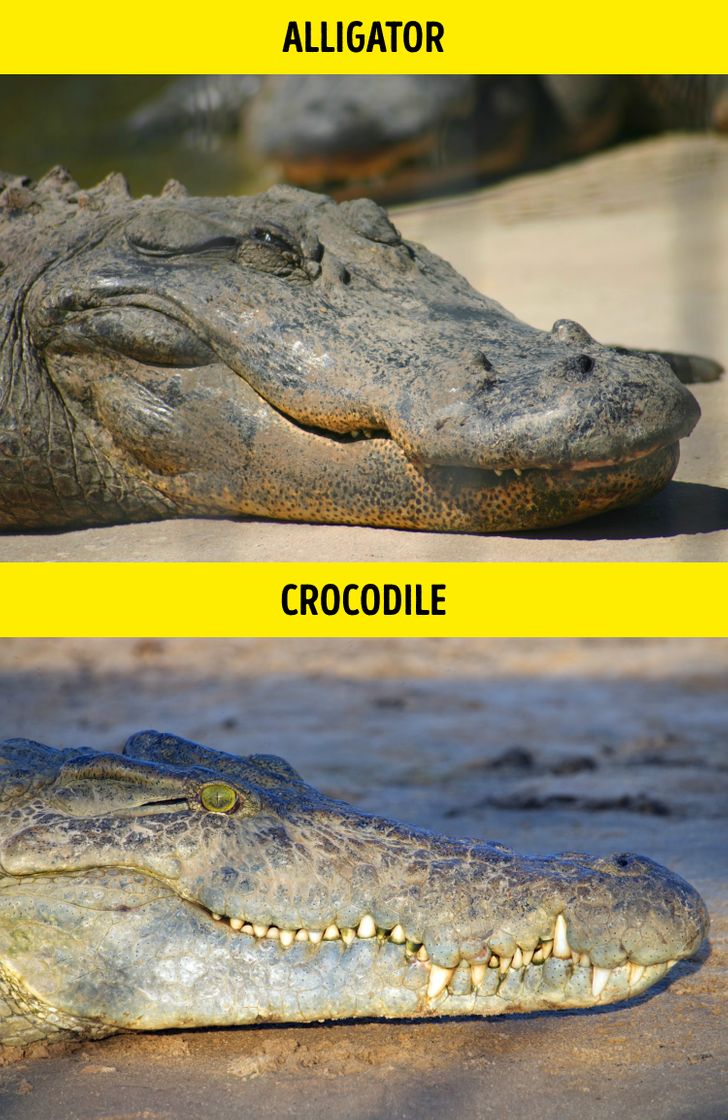
You can easily identify these 2 by the shape of their snouts: crocodiles have prominent, elongated V-shaped faces while alligators have shorter, wider U-shaped ones. Also, consider the teeth: crocodiles display their trademark toothy “grin” with every fourth tooth visible. Conversely, the alligator’s upper jaw is broader than the lower one, so its teeth aren’t visible for the most part.
3. Wasp vs hornet
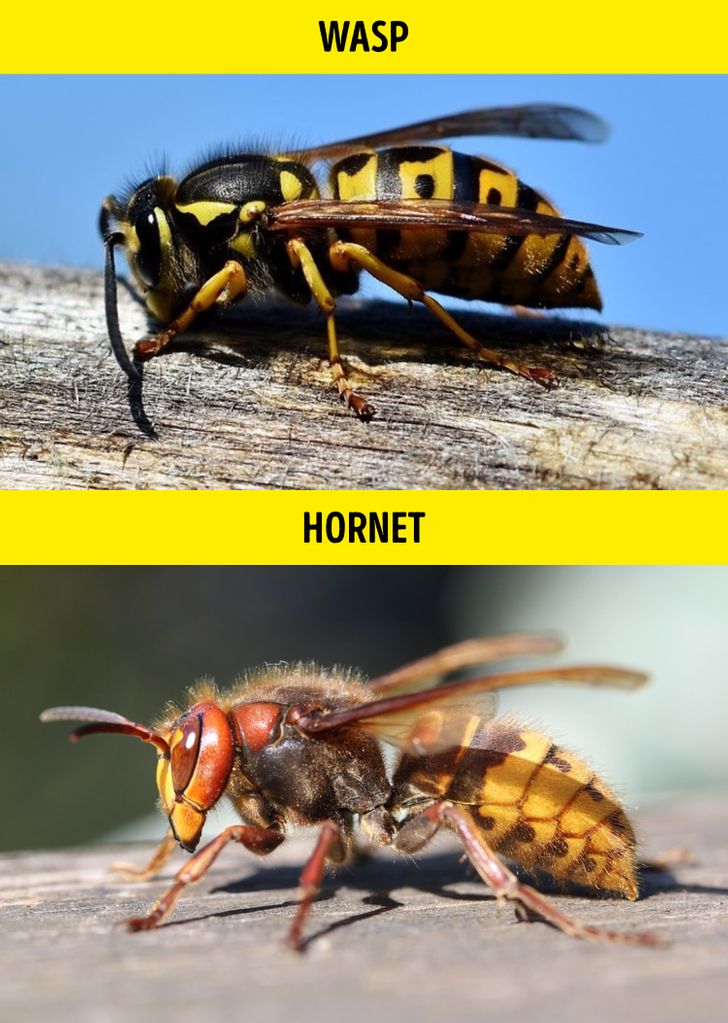
Both insects are menacing, that’s for sure. Hornets are larger and boast orange and black coloring, resembling spots rather than stripes, while wasps are more brightly colored and have yellow and black rings. You’re better off avoiding both.
4. Seal vs sea lion
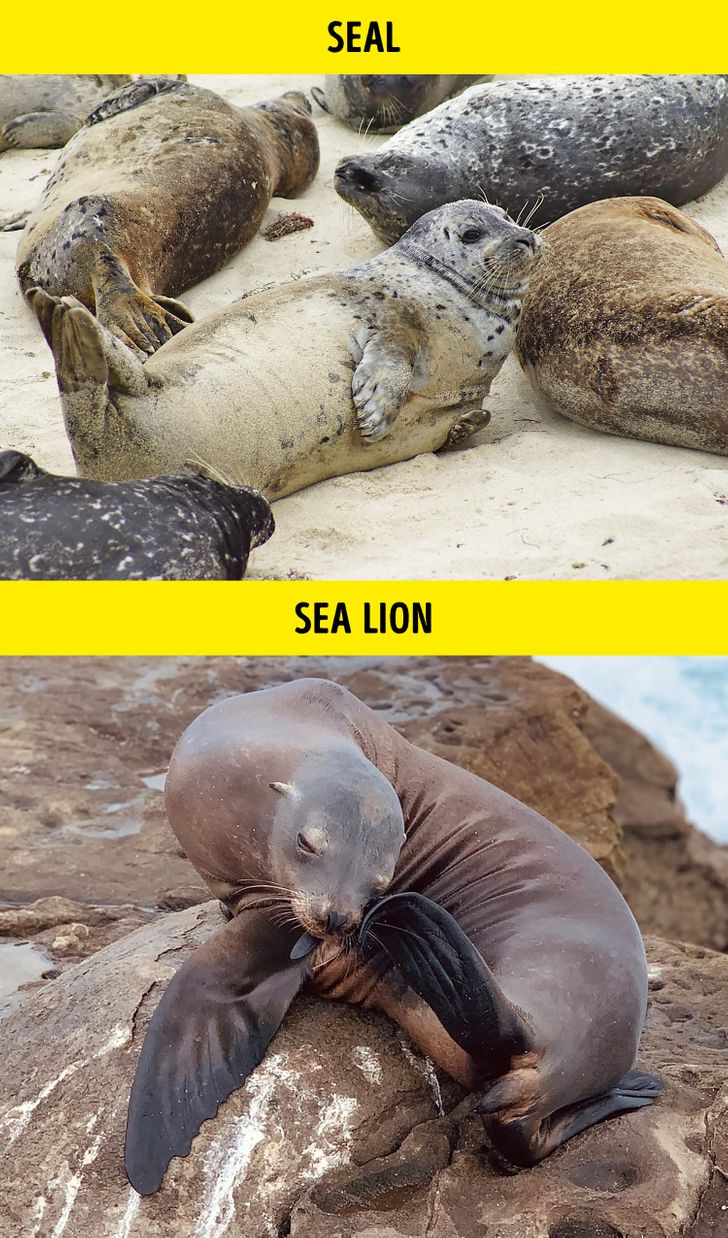
You’ve most likely met seals as cute plushy animals and sea lions as circus acrobats. Seals are covered with fur and have tiny front flippers which prevent them from walking, forcing them to wiggle on their bellies. Sea lions have smooth skin and vast flippers that they use to move on the ground.
5. Turtle vs tortoise
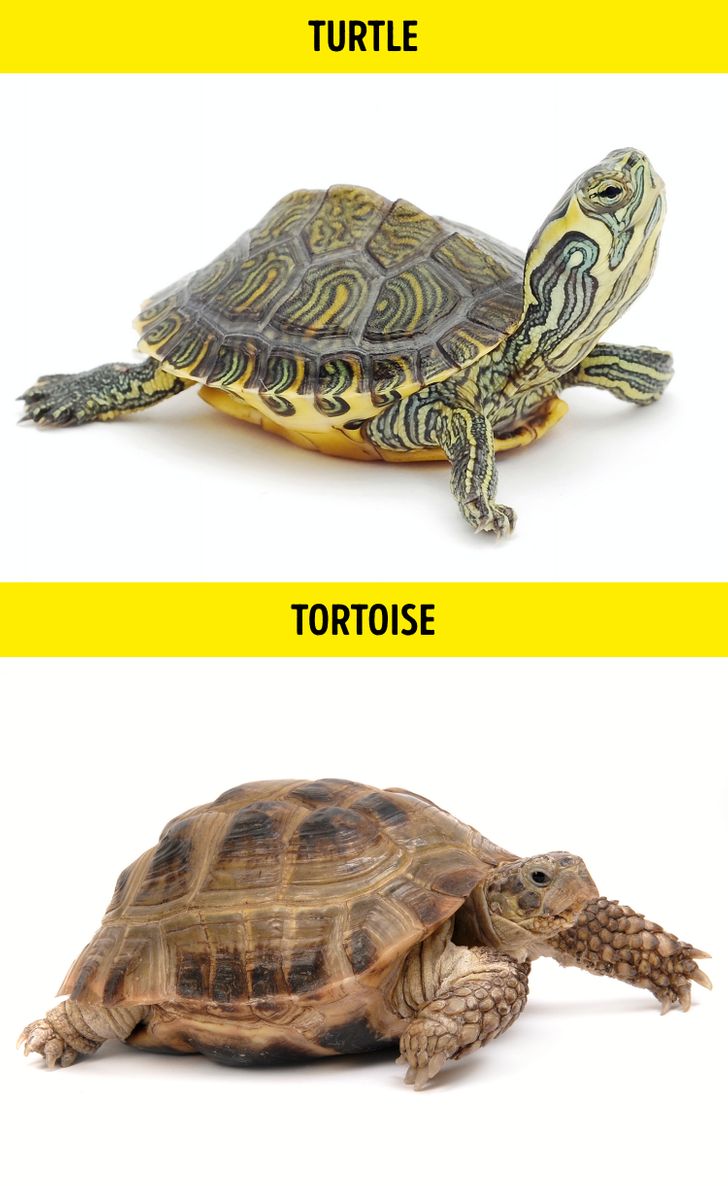
These 2 are both mobile (but very slow at that) and boast 4 legs. But the “turtle rock” is aquatic and has markings that resemble stains and circles on the water to better hide in the ponds. The “tortoise rock” is a land animal and spends most of its time on the ground — that is, as a literal rock.
6. Raven vs crow vs rook vs jackdaw
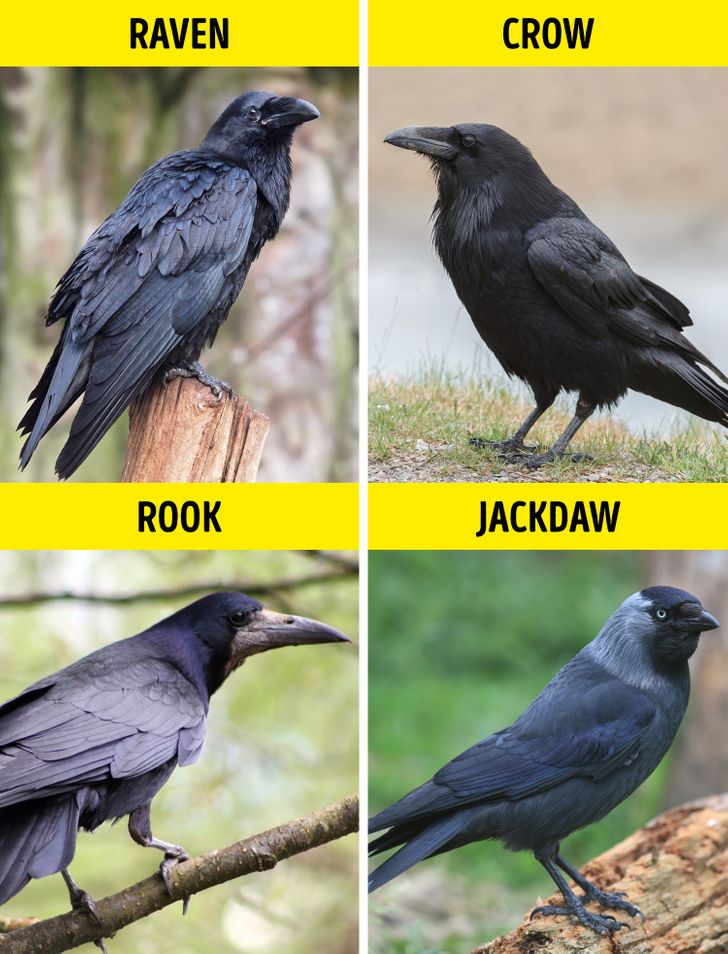
Most corvids look fairly similar (excluding jays who are like a theatre kid in a goth family). Ravens are the loftiest and most fashionable thanks to their “beard” of throat feathers. Crows and rooks are of the same size, but rooks have a distinct grey beak and fancy feather “pants” on their legs. Jackdaws are the goofiest-looking thanks to their very short beaks and a round heads with black caps.
7. Donkey vs mule
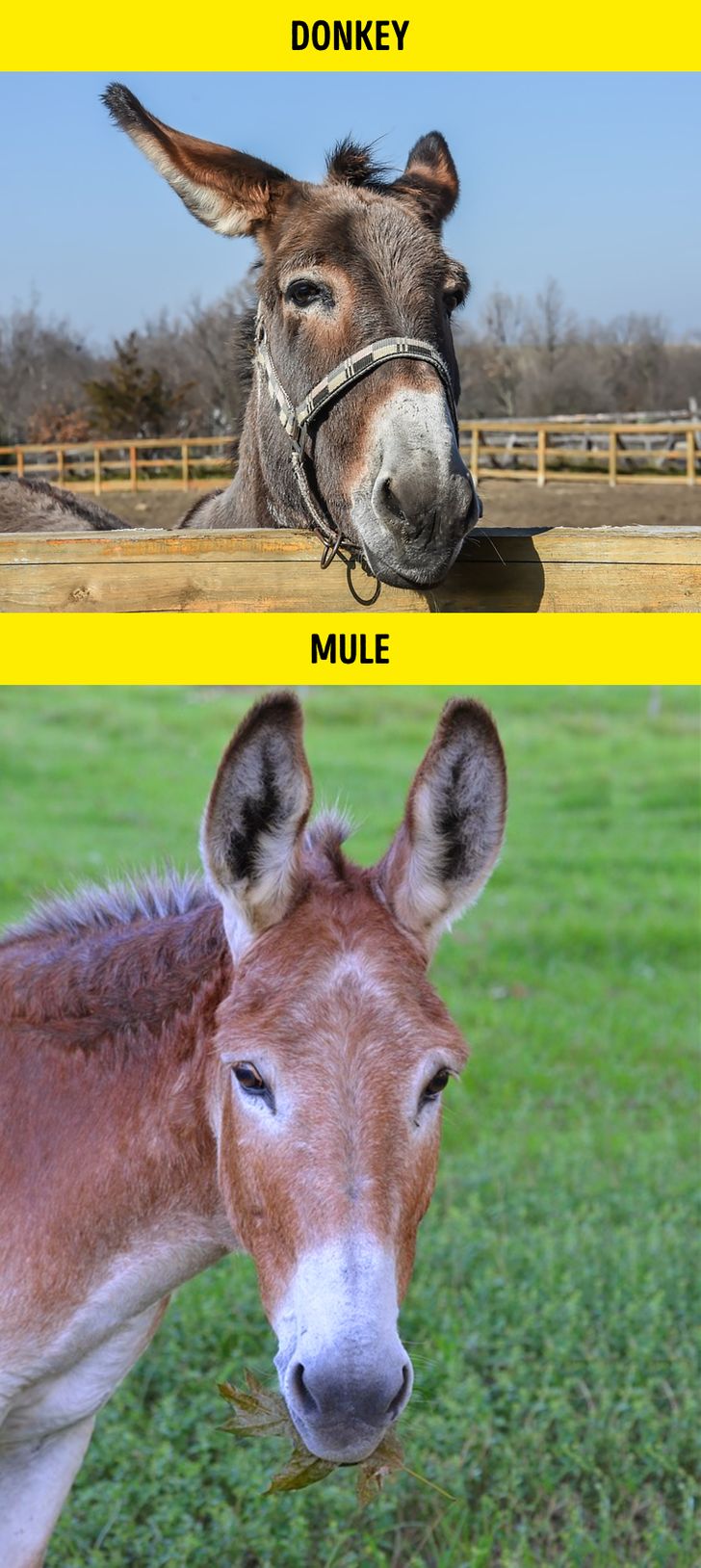
This one is tricky for a simple reason: while the donkey is its own species, a mule is a hybrid of donkey and horse. Funnily enough, it looks exactly like what you’d think these 2 animals would look like: an elegant head of a horse with ridiculously oversized donkey ears.
8. Hare vs rabbit
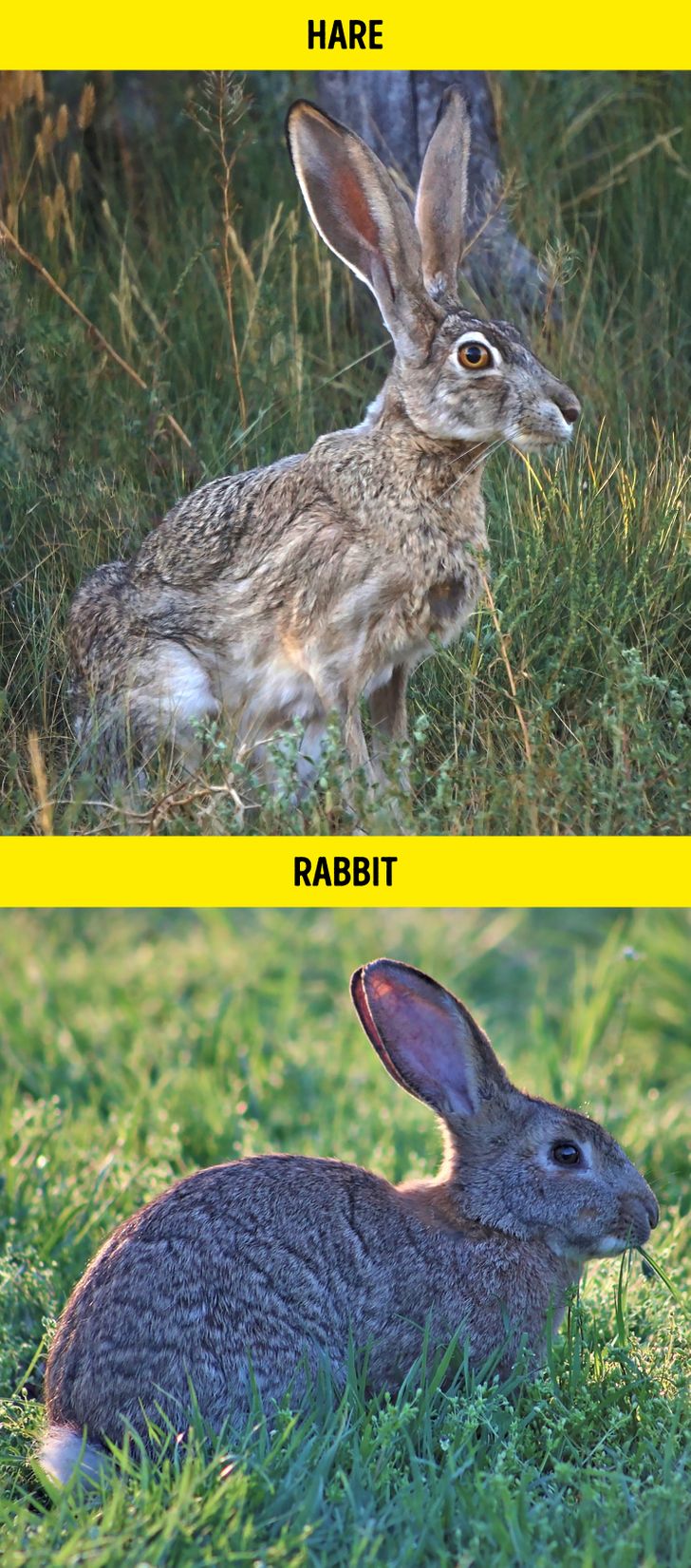
If you want a cuddly little pet, a rabbit is your best bet, but a hare definitely is not. Hares are larger and faster and have longer legs and ears. Rabbits are smaller, fluffier, and overall “cuter.” They even eat different food: rabbits prefer vegetables (like carrots) and soft grass while hares prefer bark and twigs. Rabbits are social animals while hares tend to be solitary. It’s no wonder rabbits are easily domesticated while hares mostly stay feral.
9. Moth vs butterfly
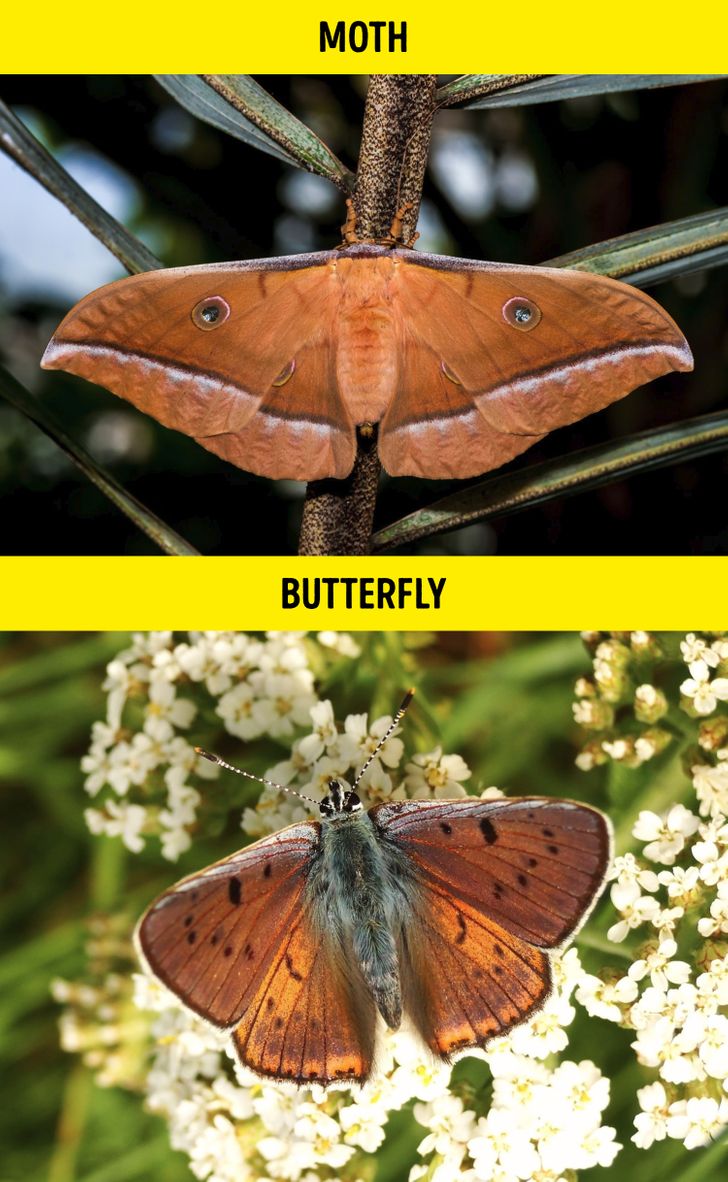
Moths have tent-like wings while butterflies flap their wings vertically. Moths usually rest with their wings open, while butterflies rest with their wings closed. Their antennas also differ: butterflies’ are long and thin and moths’ are short and feathery. Butterflies are strictly diurnal, while moths are mostly nocturnal.
10. Dolphin vs porpoise
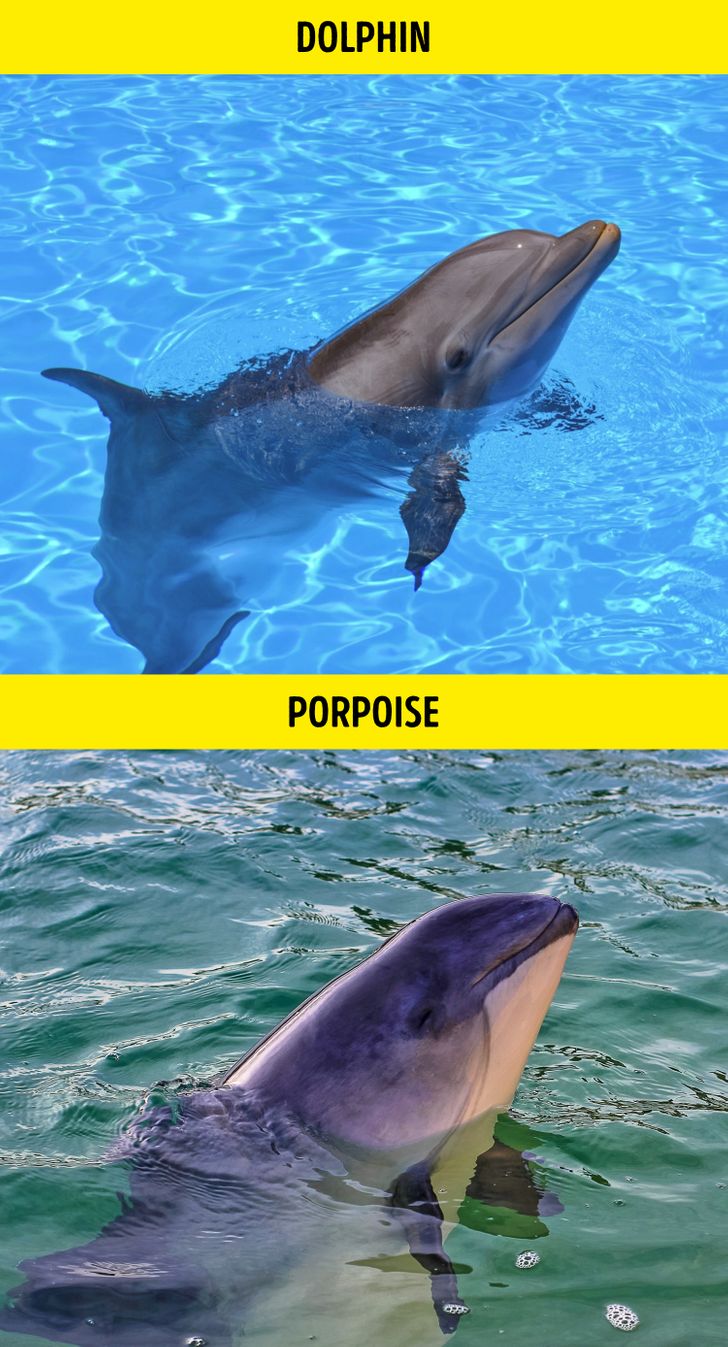
The difference between dolphins and porpoises comes down to their snouts, fins, and figures. Dolphins have long “beaks,” slender bodies, and curved dorsal fins. Porpoises have more flat, sloping faces, smaller flippers, and shorter triangular dorsal fins.
11. Weasel vs stoat
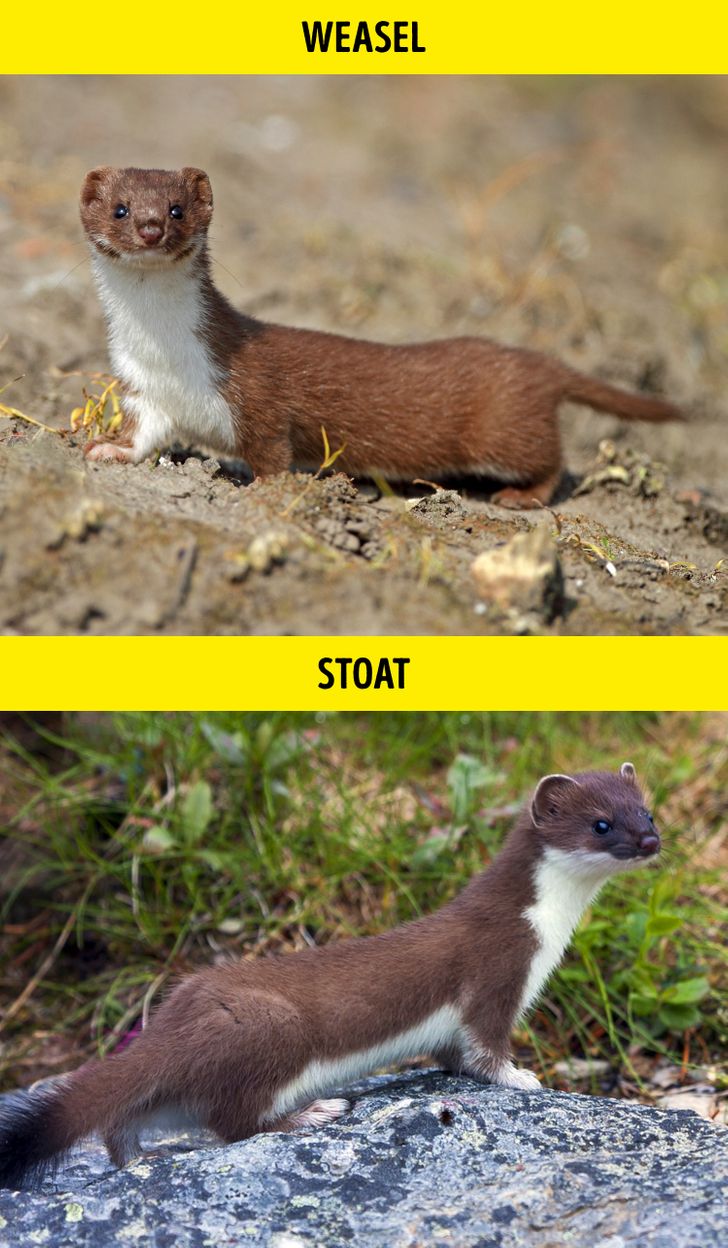
These 2 animals are close relatives. Stoats are bigger and have long tails with fuzzy black tips, while weasels’ tails are short and of the same color as the rest of the body. Stoats move in a bouncing gait with an arched back which looks hilarious, and weasels keep closer to the ground. Stoats also turn white in winter.
12. Eagle vs hawk vs falcon
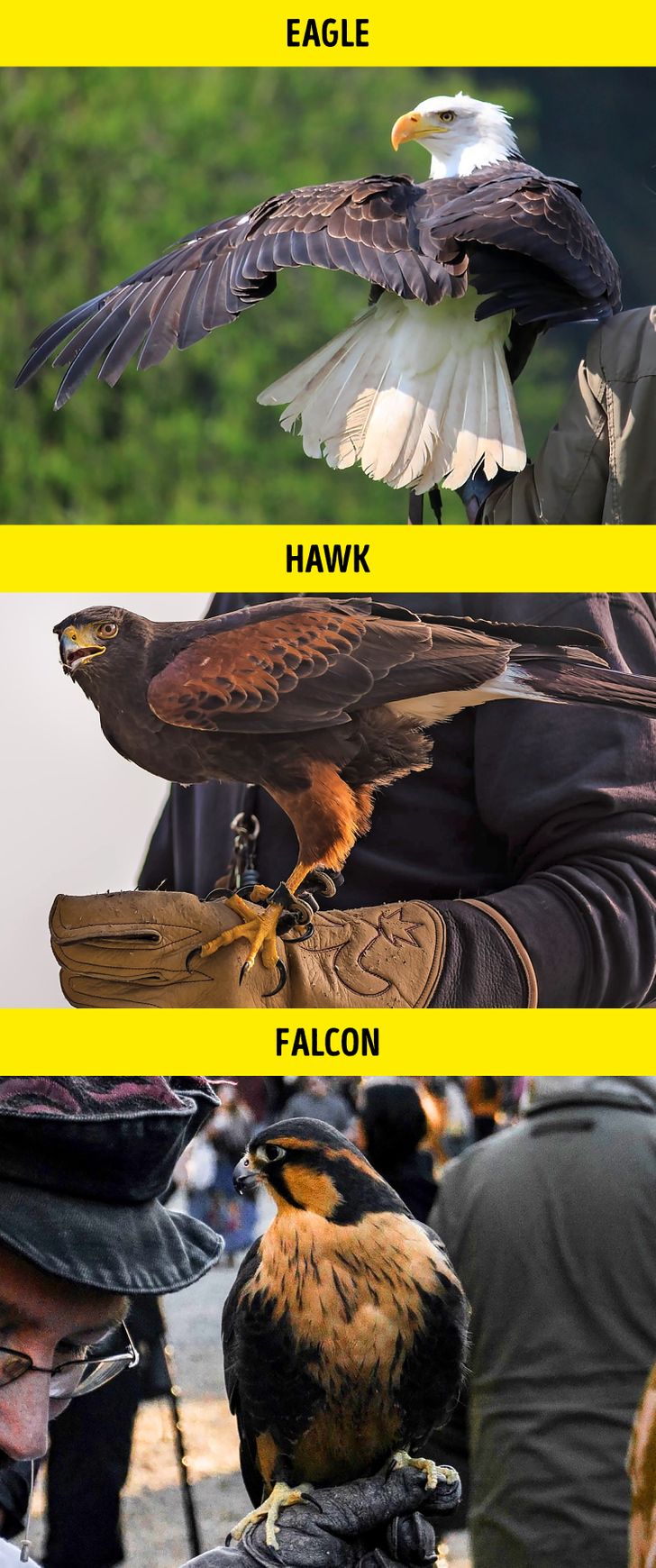
Eagles are gigantic, powerful birds who prefer to live in open spaces like cliffs and mountains. Hawks are a little smaller and more nimble in the air, capable of maneuvering in more closed areas. Falcons are the smallest and fastest of the 3 and differentiate the most visually: they have larger eyes and shorter beaks.
13. Mouse vs rat
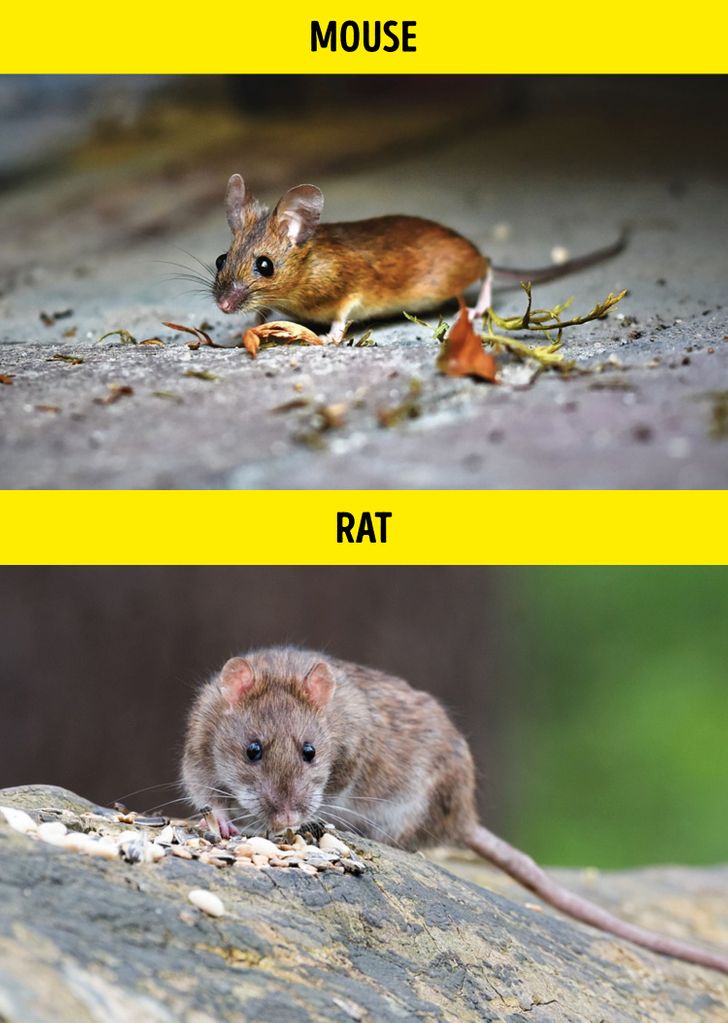
The 2 most famous (or infamous) rodents can be easily distinguished by 3 things: their size, tail, and ears. Mice are diminutive, even compared to young rats; they have thin long tails covered with fur while rats’ tails are thick and hairless. Mice have ears that are bigger in proportion to their bodies and are round and floppy with a tiny, triangular face. Rats’ faces are more prominent and blunt.
14. Seagull vs albatross
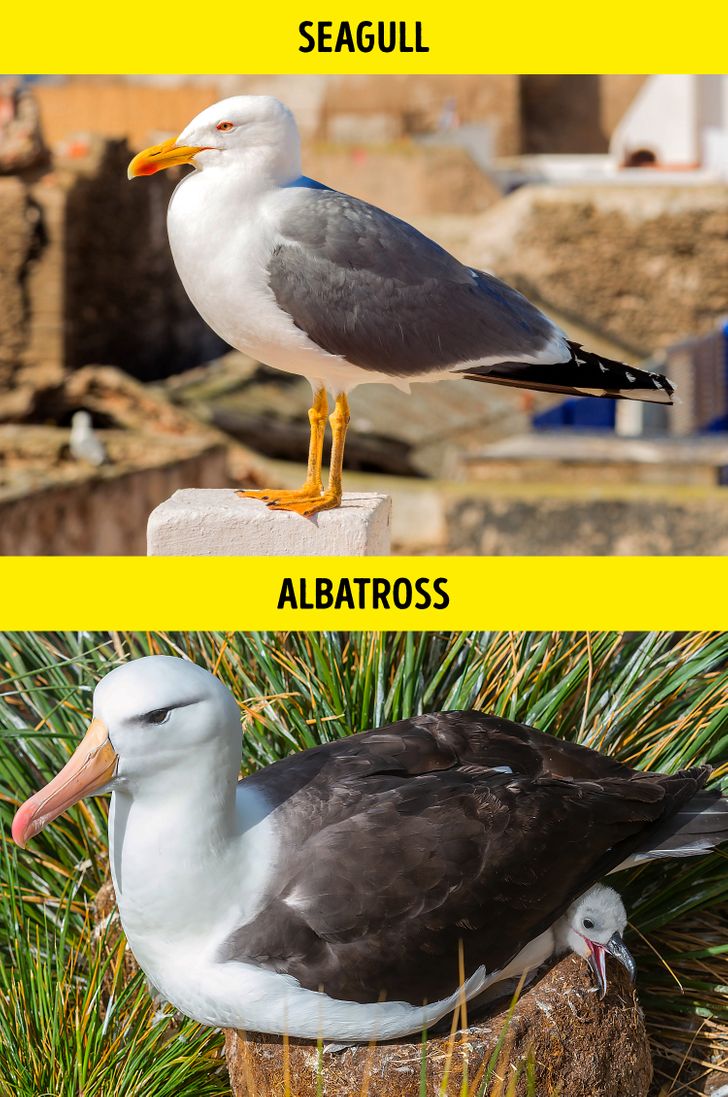
Gulls often live near water, be it the sea or ponds, and are rather acrobatic while diving and fish-catching, but aren’t fans of long voyages, unlike albatrosses. Albatrosses are portly birds who live in constant flight over the sea. They even have unique nostrils that allow them to remove salt from water and food.
15. Wolverine vs honey badger
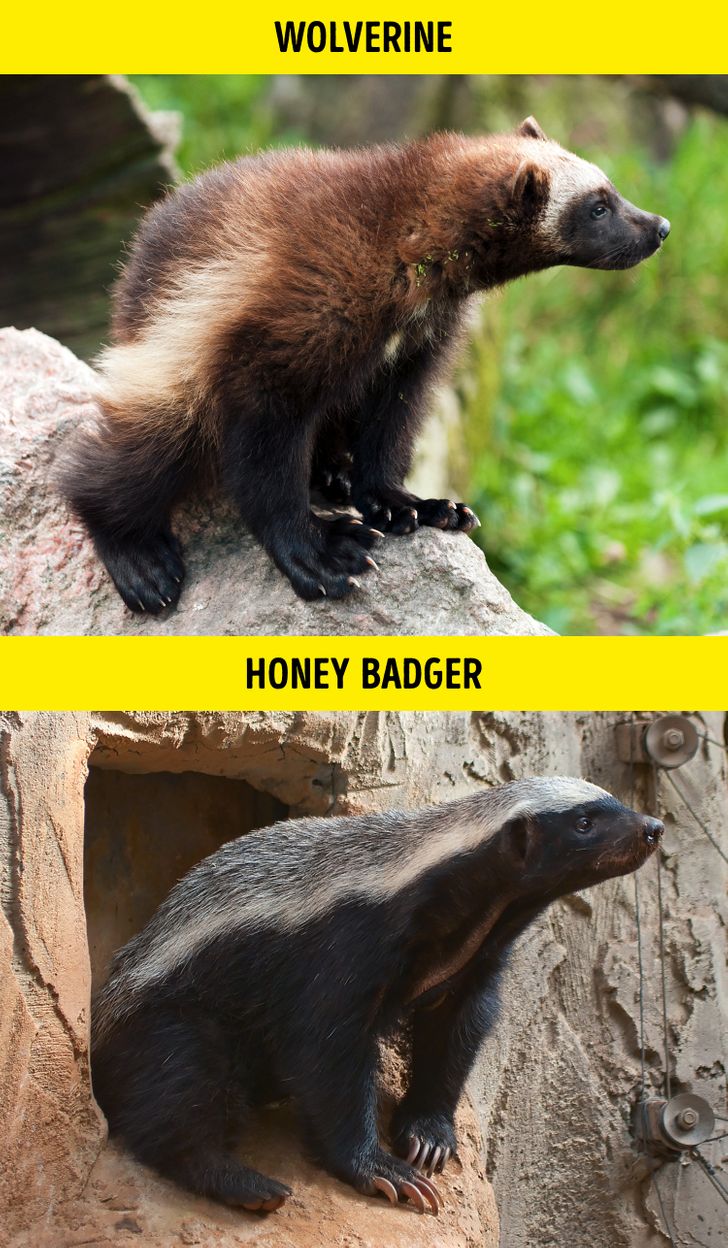
Despite living in different climate zones — the honey badger that lives in Africa and the wolverine that resides in the northern forests — both belong to the Mustelidae family. Wolverines are taller with longer legs and noticeable ears and have brown fur with yellow rings. Honey badgers keep closer to the ground and have black bodies with a white “cape” on their backs.
16. Wolf vs coyote vs jackal
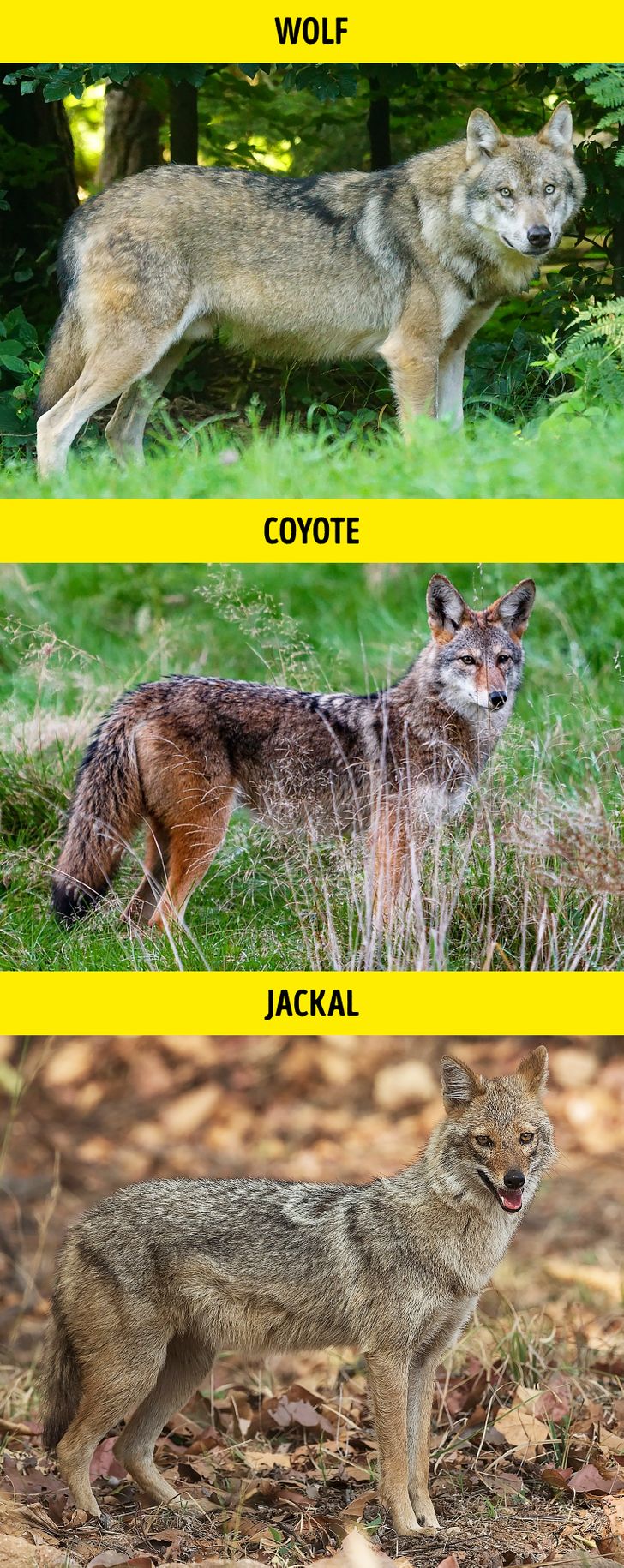
These 3 are “good boys and girls” that parade all over the globe. Jackals live in Africa, Asia, and India; coyotes live in Northern America; and wolves live all over the place. Wolves are large, sturdy animals, while coyotes and jackals possess a more lean and fragile frame.
Coyotes are recognizable for the red fur on their faces and ears while jackals have a more yellow-colored coat. Additionally, jackals are noticeably less fluffy because they don’t have to endure the harshness of winter.
Funny bonus: Wolverine vs the honey badger
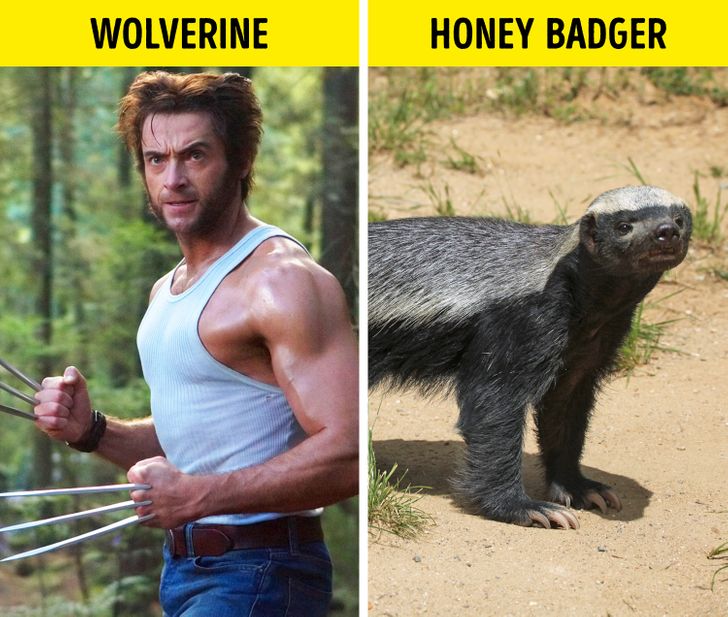
What kinds of animals have ever confused you? If you know more examples, share them in the comments!
Preview photo credit shutterstock.com, shutterstock.com
Marlo Thomas Confesses Her Love for Phil Donahue

Marlo Thomas and Phil Donahue actually wrote the marital handbook.
The long-married couple’s book, What Makes a Marriage Last: Insider Stories, contains personal facts about their marriage. Forty Well-Known Couples Share Their Secrets with Us.

The most fascinating revelation made by Marlo is that, even though she and Phil have been married for over 40 years, she never really wanted to get married.

The famous person expressed in the book her previously negative opinion of the institution, saying that marriage is like a vacuum cleaner that sucks away all of your ambition and vitality when you stick it to your ear.
Thomas frequently shares her opinions, likening marriage to having to placate a prisoner. That is, until she met Donahue.
Phil Donahue and Marlo Thomas met following the dissolution of their first marriage, and they have remained lifelong friends ever since.
The Phil Donahue Show, which was eventually renamed as simply “Donahue,” was the vehicle through which Phil Donahue first gained popular recognition. For the first time, audience members participated in the program, which ran for 29 years. One of the visitors on his show who radically changed his life’s trajectory was Marlo Thomas.

The book claims that the two met in 1977 in Chicago, when Phil was bringing four children with him. His fifth child, a daughter, lived somewhere else with her mother and ex-wife.
Marlo and Phil dated for three years before being married in 1980 in front of a small wedding party of thirty-five guests.
Not surprise, Marlo’s friends and family were taken aback by the actress’s sudden change of heart. A hilarious story of Marlo’s bridal shower, where visitors hung notes from the soon-to-be bride that disclosed her past views on marriage, is featured in the couple’s book.

The book claims that Marlo’s mother was the most shocked of all, asking Donahue, “How did you get her to do this?” throughout the nuptials of the pair.
Reportedly, among other emotions, even total strangers voiced shock at the well-known social activist’s decision to get married. While Phil was in the lavatory, a passenger on the airplane the couple took to Greece for their honeymoon expressed displeasure to Marlo, presumably disappointed that she had given up her old independent streak.
In the book, Thomas is honest enough to acknowledge that something was unclear when they spoke. After all her life condemning marriage, was she suddenly a hypocrite for getting married? Had she let those down who held her in high regard as the embodiment of self-reliance?
Even though Donahue and Thomas discuss the usual ups and downs of their long marriage in the book, they manage to make their marriage work to this day. They describe these problems as teaching moments that deepened their relationship.
The couple had been apart from the beginning of their marriage, with Phil traveling to Chicago to tape his show and Marlo traveling to pursue her acting career.

Thomas had a greater understanding of how different individuals define marriage when his aunt said that the couple’s union was void because they weren’t living together exclusively. In spite of their separation, Thomas and Donahue were able to keep their marriage together. Significantly, Marlo’s marriage resulted in her having children.
In a 2012 interview with AARP, Thomas reflected on her experience helping Phil raise his kids, stating she went into it knowing that they already had a traditional mother and that would not be her role.

Rather, Marlo claims that she began to treat Phil’s children more like friends in an effort to mimic the parenting style of her own mother. She continues by saying that she feels more connected to them today than she did at the start of their marriage.
Donahue points out that Thomas really did strive to understand the lads in the book and spent as much time as she could getting to know his sons.
Phil and Marlo believe that their long marriage is a result of her strong bond with his kids and their mutual faith in each other. “You build trust when you realize that this person always has your back,” says Marlo in clarification.
Despite being married for more than 40 years, they still have more memories to make.
Phil goes on to argue that a marriage has to be desired by both parties in order for it to last. Marlo says she would never want to be anything other than married to her lover, echoing his sentiments. She claims that Donahue has assisted her “in every manner possible.”

When two people truly commit to one another, marriage is an incredibly lovely union that is made much more beautiful.
These two have a lot to teach and inspire us all. As satisfying as their relationship is, we should all strive to be in one!

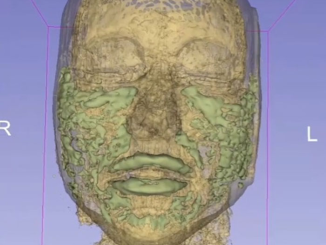
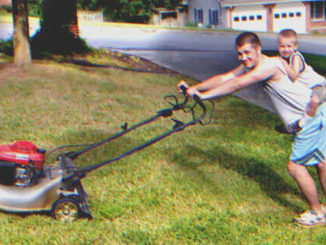
Leave a Reply